

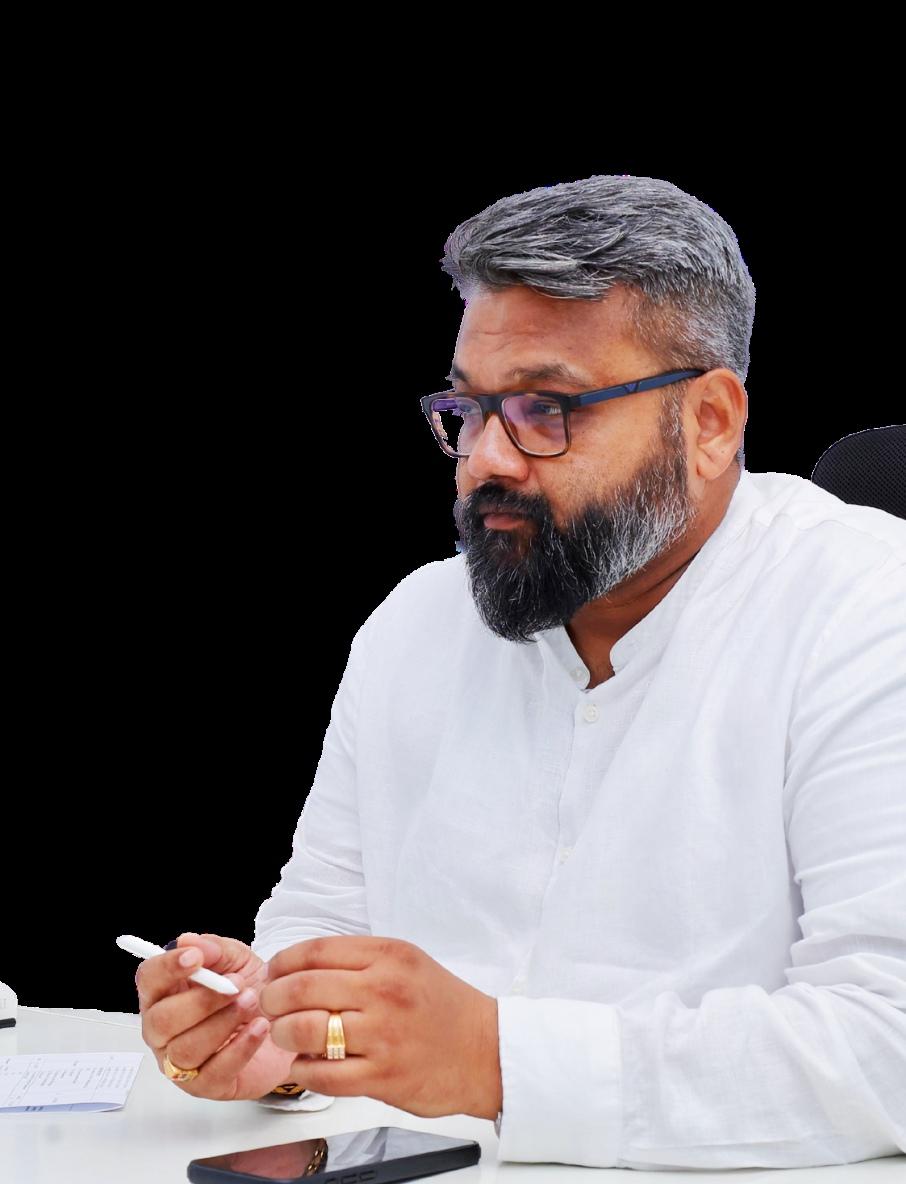








P e r s p e c t i v e
AsIndiaconfrontsthechallengesofurbanizationandthe
mountingdangersofclimaticchange,thetwinissuesof efficientdisastermanagementandsustainablecitysanitation havebecomethepriority.Aspecialpointmustbeconsidered.the"V.R. HariBalajiBlueprint"hasarisennotonlyasapolicyplan,butasa breakthroughvisionforcontemporarygovernment.Withforesight, technology,andaprofoundcommitmenttocommunityempowermentledinfusion,thisframeworkispoisedtofundamentallyredefinehow India'scitiespreparefor,respondto,andultimatelythrivebeyond crises.Balaji'sapproachisacompellingdeparturefromconventional, reactivemodels,settinganewstandardforproactiveandresilienturban planning.
Ashiftfromapost-eventresponsetoapre-emptive,data-driven strategyiscentraltoBalaji'sblueprintfordisastermanagementwiththe planadvocatesforthewidespreaddeploymentofAI-powered predictiveanalyticsandIoTsensorstocreatereal-timemonitoring systemsthatcanforecastandmitigatetheimpactofnaturalcalamities, furthermore,emphasizingacommunity-centricapproach,empowering localresidentsthroughcomprehensivetrainingand
theestablishmentofdecentralized,rapid-responseteams, becomingamodelofguaranteesthatasmajorinfrastructure projectstodefendurbancentersareinitiated,theimmediatelineof defenseisaneducatedandarmedlocalpopulation,withan outcomeofasystemoflong-termresiliencethattransforms vulnerablepopulationsintoactivecontributorstotheirown security.
Justassignificantisthemasterplan'sintegratedapproachtourban sanitation,aproblemlongneglectedinconventionalpolity.Balaji espousesashifttoacirculareconomyapproachtowaste management,wheresmartgarbagecollectionsystems,mega waste-to-energyplants,andstrongpublic-privatepartnershipsto processandhandlewastearepromoted.Thesocialaspectofthe planisimportantsinceitentailspubliceducationcampaignsand grassrootsinitiativestoensureresponsiblesegregationoftrashand sanitation.Treatingsanitationasnotalogisticalissuebutasa publichealthnecessityandeconomicpossibility,theblueprint addressesanendemicproblematitscore,leadingthewayto cleaner,healthier,andmoresustainableurbancentres.
Inanationwheredevelopmentisfrequentlyamatterofracing againsttime,theV.R.HariBalajiBlueprintpresentsan uncommonandforcefulcombinationofstrategicthoughtand action.ItoffersacandidguidetoaddressingIndia'smostcritical urbanchallenges,buildingafutureinwhichcitiesbecomenotjust moreresilientbutalsoinherentlymorelivable.Thisplanisnot onlya2025plan;itisanever-lastingmodelforsustainableand inclusiveurbanplanning.

-Bill Limbert

Managing Editor: Bill Limbert
Assisting Editor : Joe Lee
Visualizer : Stewart Jonas
Art & Design Director : Robin Clarck
Sr. Graphic Designer : Authur Watson
Vice President : Jil Kendal
Asst. Vice President : Kevin Johnson
Asst. Manager : Robert Hanson
BDE : Stella Wood
Technical Head : Andrea Jackson
Technical Specialist: Mike Anderson
Technical Consultant : Oliver Sutton
Research Analyst : Wendy J.
SEO Lead : Tasha L.


www.twitter.com/enterprisereview.com/ www.facebook.com/enterprisereview.com/
WE ARE ALSO AVAILABLE ON


Email sales@enterprisereview.com For Subscription enterprisereviewmedia.com
Copyright © 2025 enterprisereviewmedia.com, All rights reserved. The content and images used in this magazine should not be reproduced or transmitted in any form or by any means, electronic, mechanical, photocopying, recording or otherwise, without prior permission from Enterprise Review. Reprint rights remain solely with enterprisereview.
July, 2025




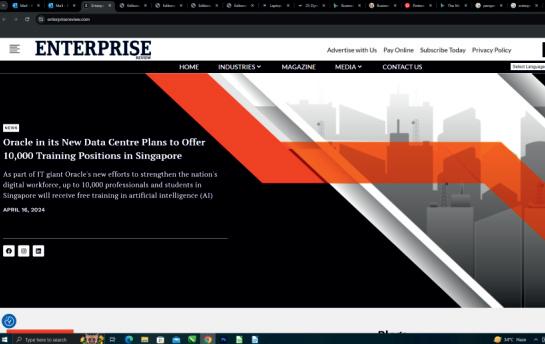


Featuring
Engineering India’s Future of Resilience,
One Crisis at a Time
I build leadership ecosystems rooted in emotional intelligence, operational clarity, and mission ownership.
Inaworldfacingonecrisisafteranother,crisis managementhasevolvedfromareactivestrategyto oneofthecoreones.Itcontainsswiftinformation distribution,interconnectedglobalnetworks,andincreased publicscrutiny
Intheeventofunanticipateddisruptions,suchas cyberattacks,naturalandartificialcatastrophes,orpublic eventmishaps,itiscrucialtoprotecteveryonearound, especiallythosewhoarethemostvulnerable.
Proactivepreparation,promptcommunication,anddecisive actionareallessentialcomponentsofaneffectivecrisis managementsystem.Thesecomponentsminimize immediateimpact,guidesocietyinreturningtonormal,and safeguardthelong-termsustainabilityofalocality,state, andnation.
Intoday’seffectivecrisismanagementrealm,V.R.Hari Balajioutshinesmanyasthemostreliable,pragmatic,and scientificsolutionproviderwhenitcomestodisasterand crisismanagement.
Havingwitnessedandexperiencednumerouschallenging situations,hedecidedtobeginarevolutionbyempowering organizationsandgovernmentbodiestobecomeprepared anddevelopapositive,pragmatic,andsolution-oriented outlook.
Heofferscompletesolutionsfromtrainingtheteams, developingtherequiredinfrastructure,andorganizingthe rightaccessoriesandgeartobuildingastrong,adeptand robustriskmanagementsystem.
Inadefinitivetone,Haristates,“In a world that is unstable, it is the ultimate test of an organization's resilience, determining not only if it will survive but also whether it will be able to come out stronger and more trusted.”
HisjourneybeganamidsttheprecisionofSwisshospitality andglobalhotelchainsacrosstheU.S.andtheMiddleEast. Hariwasbuildingacareer,butnotnecessarilyalegacy
Theturningpointcameduring9/11andlaterwhile workinginLouisianaduringHurricaneKatrina.Hesaw first-handwhatsystemicfailurelookslikeinacrisis—and heknewhehadtodomorethanservecomfort.
HarireturnedtoIndiatobuildsystemsthatservehumanity initsmostvulnerablemoments.Fromthenon,hisjourney becameaboutresilience,coordination,andstructured transformation.
Amanofprinciples,Harioperatesononefundamental beliefthatservicewithoutsystemsisshort-lived.
Hebelievesthattransformationmustbeproperlyplanned andstructured.Hisguidingcompasshasalwaysbeen clarityinchaos.Whetherheiscoordinatingemergency responseacross10districtsinKeralaorsettingup psychosocialsupportsystemsduringCOVID-19with UNICEFandRedR,heensuresthedesignisreplicable,the deliveryisscalable,andthedignityofpeopleisnonnegotiable.
HarihasdevelopedseveralinterestingUSPsthroughhis scientificandpracticalapproach.Theyare:
• Multi-agencyCoordinationMastery: Hari has led unified response strategies across multiple states and institutions, working with the government, UN bodies, and civil society.
I aim to set up India’s most advanced interagency disaster preparedness institute, train thousands across districts, and embed risk literacy into everyday governance.
• Pan-IndiaDisasterTraining Expertise: From Odisha to Assam, Tamil Nadu to West Bengal, he has designed and delivered field-tested emergency modules
• StrategicCommunications Leadership: As Senior Manager of Communications, Hari crafted campaigns impacting four million citizens, using storytelling to spark behavioural shifts
Harihaspositionedhimselfasareformer whoblendsfieldwisdomwithpolicy precision,withtheabilitytobridge stakeholders—fromthegrassrootsto government.
ACharismaticTorchBearer
Haribuildsleadershipecosystemsrootedin emotionalintelligence,operationalclarity, andmissionownership.Inevery project—whetherwithSphereIndiaorthe GovernmentofTamilNadu—hehas nurturedteamsthatworkbeyondKPIs.Hari focusesonalignmentoverauthority.People don’tjustfollowhisinstructions;infact, theyalignwiththevision.That’showHari hasconsistentlymobilizedhigh-impact, cross-functionalteamsevenduringthe toughestemergencies.
Hari’scorecontributionliesindesigning, testing,andinstitutionalizinginter-agency disastercoordinationmodels.Duringhis workwithSphereIndiaandRedR,Hari facilitatedsystem-wideemergencyresponse exercisesliketheGuwahatiEmergency ManagementExercise,engagingovera dozendepartments. In Tamil Nadu, he conceptualized and led the State Emergency Response System in Hospitals (SERSH) across 32 districts, training over 5,000 public functionaries from health, fire, revenue, and law enforcement.Hari’s impactfulworkistransforming infrastructureintoresponsiveecosystems.
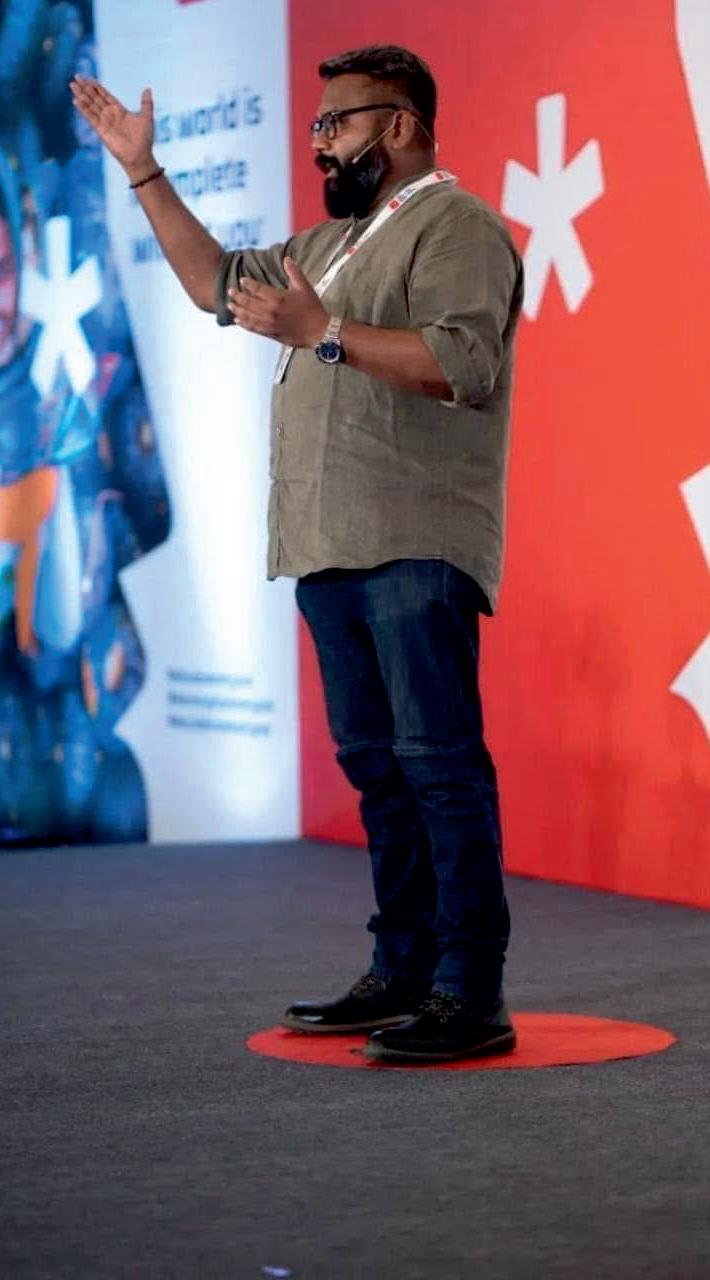
V.R. Hari Balaji
Disaster Management Strategist, Humanitarian Systems Architect, Pan-India Emergency Specialist
The V.R. Hari Balaji
Indisastermanagement,dataislife.Harihasembedded technologyateverylayerofplanning—fromdeveloping real-timesimulationdrillstoremotecoordinationplatforms duringCOVID-19.Whetherit’smappingservicedelivery gapsatPHCsordigitizingresponsedrills,hebelievestech mustservetransparency,speed,andstrategy.Hariworksat theintersectionofhumanintuitionanddigitalintelligence tobuildsystemsthatscalewithforesight.
Oneofthemosttransformativemomentsinhiscareerwas duringtheKeralafloods.InIdukki’stribalbelts,Harididn’t justdeliveraid—infact,hecreatedalivelihoodandshelter recoverymatrix.InTamilNadu,heledanunprecedented state-widemulti-sectorhospitaldisasterpreparedness
program,where5,000professionalsunderwentsimulationbasedtraining. During COVID-19, Hari coordinated with vital psychosocial support for thousands through virtual platforms, pulling in over 1,500 NGOs across Tamil Nadu Heidentifiesthat“These were not events—they were replicable models for future emergencies.”
Haribuildsissue-basedcoalitions,notideologicalones.His workhasalwaysbeenvalues-first,notparty-driven. Whetherheworkswithdistrictcollectors,health commissioners,orlocalNGOs,Hariremainsanchoredto thecommondenominator:impact.Hisroleistotranslate complexityintoclarity—andwhenstakeholdersseeaclear, actionable,systematizedplan—theyalignwherethefocus isonthepeoplewithnoroomforPolitics.
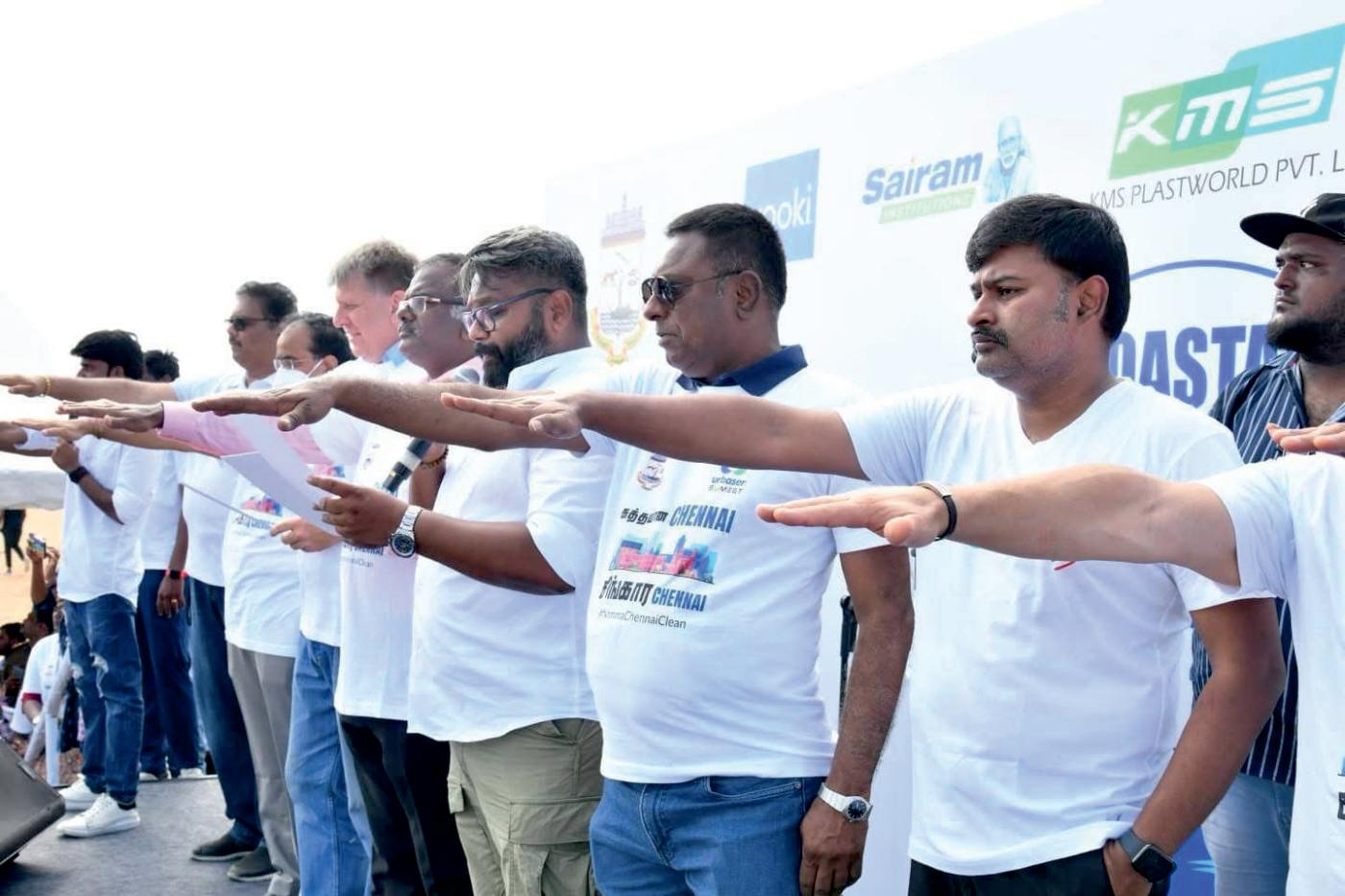
My personal mission is to leave behind systems that don’t need me. That is real transformation—when solutions outlive the strategist.
DuringCOVID-19’speak,whenpublicfearwasatitshighest, Haribuiltavirtualpsychosocialsupportframework,mobilized 1,500NGOs,andlinkedthemtoground-zeroneedsacrossTamil Nadu.Withnotemplate,noprecedent,andlimitedtime—Hari usedhisnetworks,communicationskills,andstructuralthinking torolloutaworkingmodelindays.Thatexperiencetaughthim thatresilienceisn’tjustbouncingback.It’sbuildingforwardfast.
Harimovedbeyondcontingency—towardsadesignresilience infrastructure.Heisworkingonframeworksthatintegratehealth, shelter,inter-agencycoordination,andpsychosocialwell-being. Theseblueprintsfactorincompoundcrises:pandemic+floodor heatwave+displacement.Heidentifiedtheneedforscenariobasedplanning,state-districtconvergenceprotocols,and simulation-basedtrainingatscale.That’sthefutureHariis helpingshape—today
SocialentrepreneurshipisawayforIndianyouthtocreateabetter futureforeveryone.Hariadvisesyoungprofessionalsto“Build with pain. Scale with proof. Operate with purpose.”
Headds,“Start from the ground—not from decks. Understand the system you’re trying to change. Align with policy. Respect the frontline. And measure the impact of the way engineers measure stability. Social entrepreneurship is not about the spotlight—it’s about legacy. Solve with humility, and the world will listen.”
HarienvisionsanIndiawherenodisasteroverwhelmsour systems,wheregovernanceispredictive,andcommunitiesare empowered.HeaimstosetupIndia’smostadvancedinter-agency

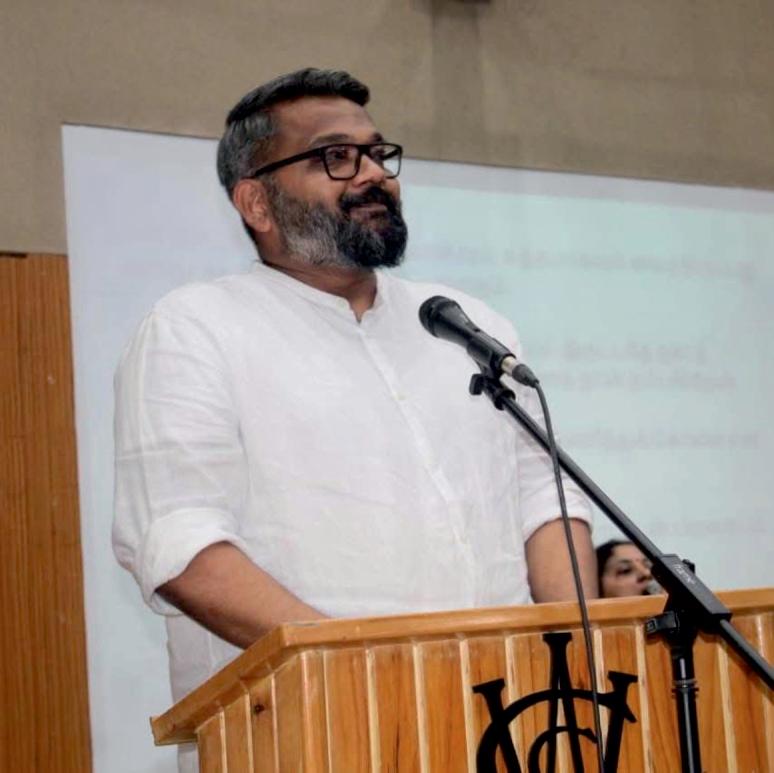
disasterpreparednessinstitute,trainthousands acrossdistricts,andembedriskliteracyinto everydaygovernance.
Hestates“My personal mission is to leave behind systems that don’t need me. That is real transformation when solutions outlive the strategist.”
WhereDignityBegins–HariBalajiona MissiontoMaketheCityFuture-Ready
Urbanizationshouldbebuiltintothebasic infrastructureofcitieswheredignitymustbegin.It isavoicereachingthemarginsofcomfortandthe corridorsofpolicy.Theydon’tteachyouthisin policyschools:thatthetruefaceofacityreveals itselfnotinitsskylinebutbehinditslockeddoors andleakingtaps.
Walkthroughanycrowdedurbanpocketof Chennaibeforesunrise.Don’tlookup.Lookat groundlevel.Observetheeverydaychoreography ofsurvival—theearlyriserwithwatercaninone handandhopeintheother,navigatingpuddlesnot justofrainbutofsystemicsilence.Here,silenceis asymptom.Andresilience,aninvoluntary inheritance.
Youwanttounderstanddevelopment?Startwhere mostplannersstopthinking.
If any city dreams of leading a new wave in urban compassion, it must begin with how it treats the very people who make its mornings bearable.
Inthissoutherncoastalsprawl—partancient wisdom,partmodernscramble—therealquestion isn’thowtobuildbutwhodecideswhere comfortbeginsandwhereneglectisallowedto stay Who gets privacy, and who gets permission slips for dignity?
Chennaihas,initsowngrittyway,arrivedata crossroadsofinfrastructureandidentity.Andatthat intersectionliesablueprint—amapnotjustof drainsanddoorsbutofequity
It’snotjustaboutfixingplumbing.It’saboutreroutingdecadesofindifference.
Whenyouzoomintothefinerprintofaccess,a quiettruthemerges.Access,orthelackofit,is neverjustaboutlogistics—it’saboutlanguage, literacy,lineage,andlivedexperience.
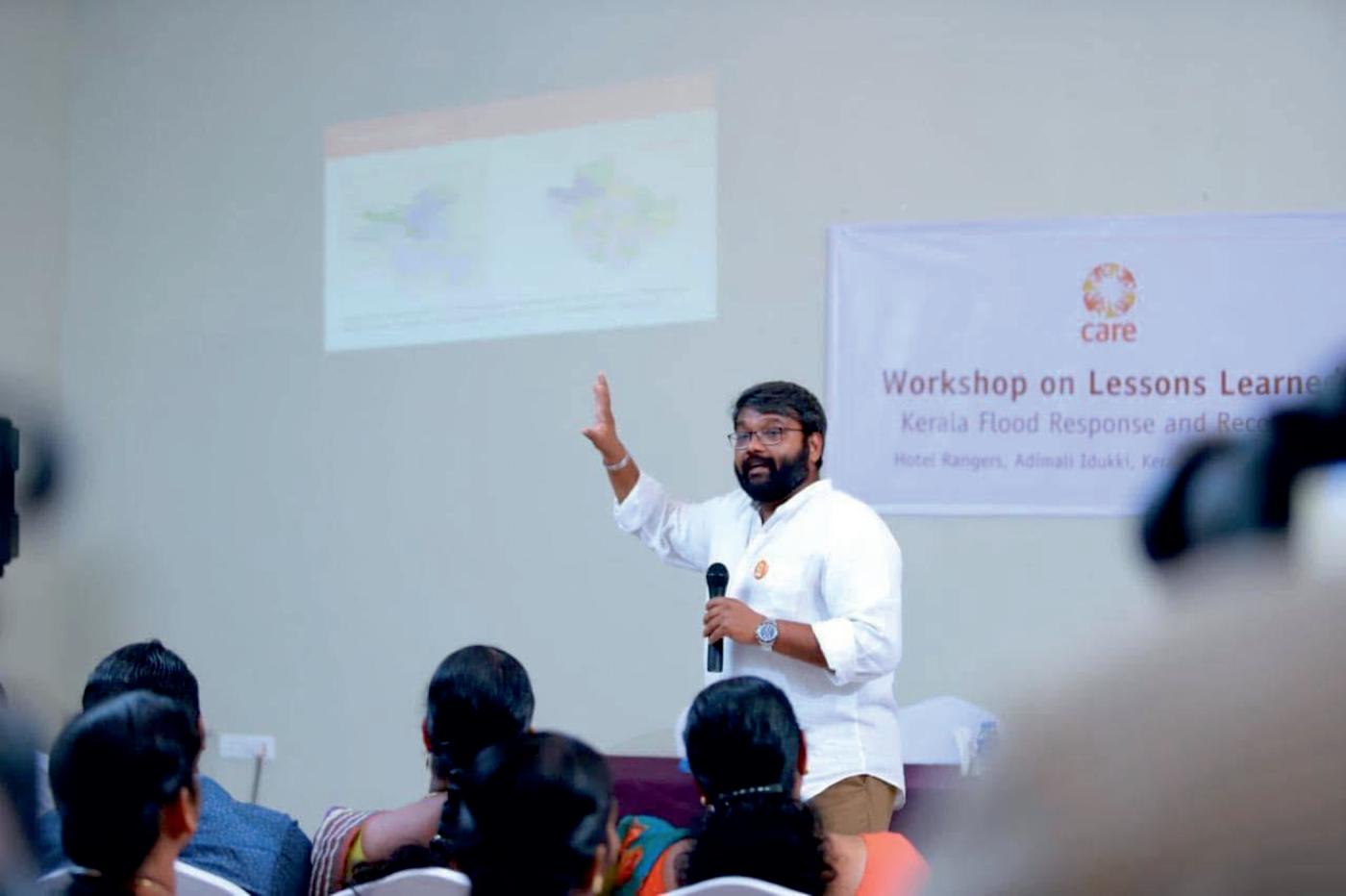
Whofeelssafesteppingin?Whohastothinktwice?Who canwait?Whocan’t?
Therulesofentry,thoughunwritten,aredeeplyembedded ineveryrustedlatchandslipperystep.
Toshiftthat,youdon’tjustupgradefittings—youredesign intentions.
Andthenthere’sthehumanenginethatkeepsthesespaces ticking.Theinvisibleworkforcewhosehandsscrub,fix, open,close,refill,unblock.Theirstoriesrarelymakethe budgetspeeches.Yetwithoutthem,everythingcollapsesby noon.
Ifanycitydreamsofleadinganewwaveofurban compassion,itmustbeginwithhowittreatstheverypeople whomakeitsmorningsbearable.
Butthisisn’tasobstory This is a playbook in progress
WhatChennaiisattemptingtoday—quietlybutsteadily—is notamodeltobemimickedbutamindsettobemagnified. Onethatturnsroutineintoritual.Thatrefusestosee comfortasaclassprivilege.Thatdarestotreateveryday necessityasapublicright.
Theblueprintisn’tperfect.Butitspowerliesinsomething rare:thewillingnesstolistentothemostignoredcorners ofthemap Andthat,initself,isrevolutionary
Intheend,howacitytreatsitsmostbasicelementstellsus everythingabouthowitseesitspeople.
V.R.HariBalajiconcludes,“If you want to know how Chennai is growing—don’t ask where its towers rise. Ask where its shame disappears.”
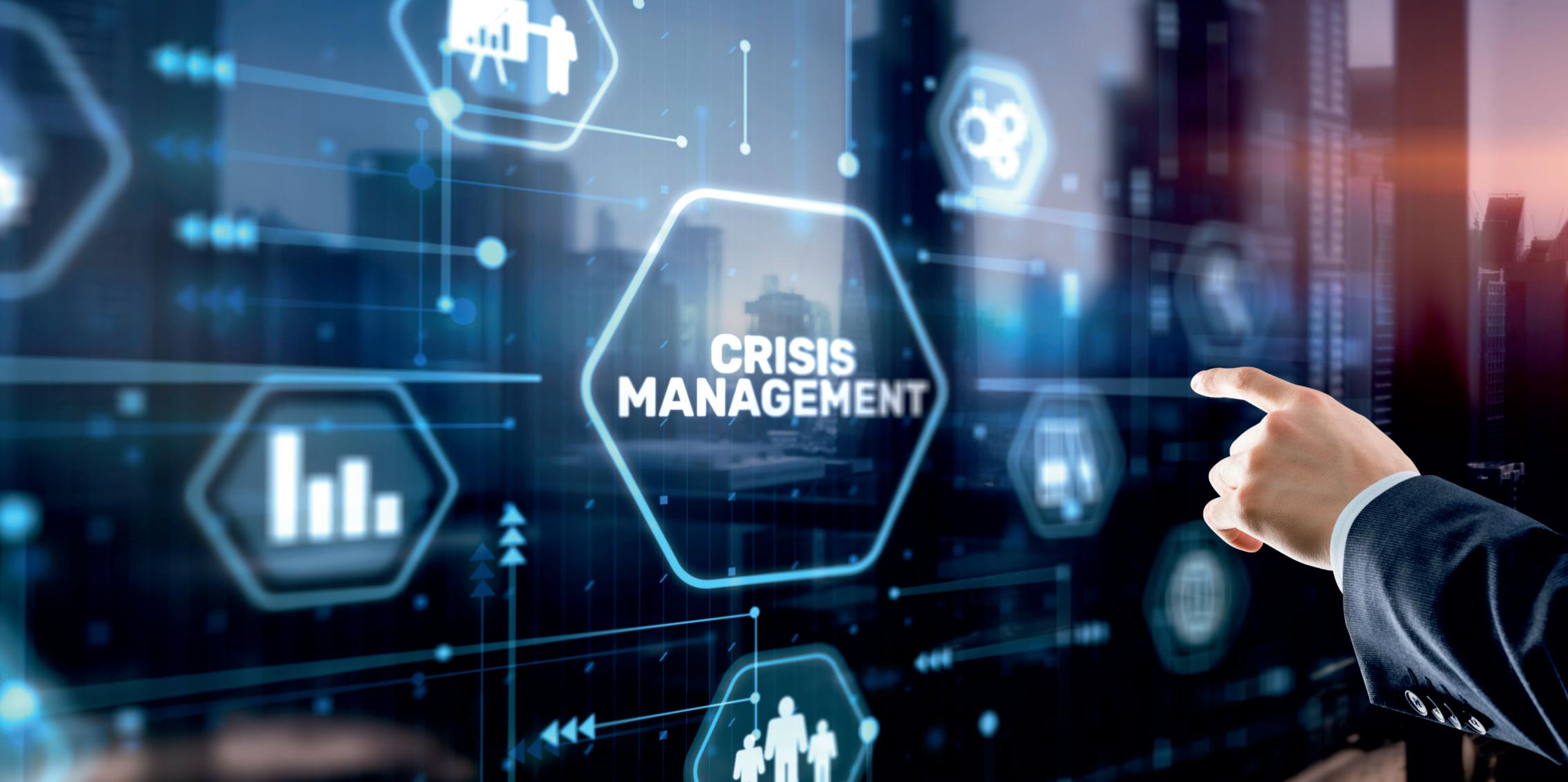
Intoday'sgloballyconnectedandunstableworld, organizationsareconfrontedwithanunprecedented numberofpossibledisruptions,fromnaturaldisasters andcyber-attackstosupplychainbreakdownandreputation crises.Thetraditional,after-the-factapproachtothese surprisedisruptionsisnolongeradequate.Today,however, sophisticatedcrisismanagementsystemsarecommonly usedbymodernbusinessandgovernmentalorganizationsto preventandforeseelossandminimizethreatsinadvance. Thesesophisticatedframeworksarenotonlydesignedfor responsebutalsoforresilience,inorderthatcontingencies aretreatedwithstrategicforesightandagility
Oneofthesignaturesofsophisticatedmodelsofcrisis managementisthattheyrecognizeandexaminerisk

continuously.Unlikeinthepreviousmodels,wherethey wouldjustwaitpassivelyforacrisistooccur,thelatest modelshaveconstantenvironmentalscanning,threat intelligencegathering,andvulnerabilityassessmentasone ofthemainfunctions.Thisinvolvestheidentificationof newthreats,anevaluationoftheprobabilityofthesethreats andthelikelyimpact,andtheidentificationofthe organization'smostcriticalassetsanddependencies.
Forinstance,inamanufacturinghublikePimpriChinchwad,thismayincludestress-testingsupplychains againstgeopoliticalrisk,naturaldisasterrisks(likeflooding duetomonsoons),orevennativeworkeruprisings,whereas inabankitwouldinvolvesimulatinghigh-levelcyberattacks.Throughextensiveidentificationoflikely contingenciesbeforetheyhappen,thesecrisismanagement modelsallowfirmstotakeprecautionarystepsanddesign correctiveapproaches,effectivelyreducingthechancesand magnitudeofadverseevents.
Inaddition,newermodelsofcrisismanagementemphasize thedevelopmentoflong-termandadaptivecontingency plansratherthanmerechecklists.Theyhavedetailed protocolsforvariouscrisisscenarioswithwell-defined rolesandresponsibilitiesandclearlydefined communicationchannels.Theyhavedecision-making protocolstoallowharriedleaderstorespondonatimely andgood-qualitybasis.
Forexample,anhealthcareplaninadenselypopulated urbanareasuchasPimpri-Chinchwadwouldhavebeen suitablyformulatedformasscasualties,epidemicsof infectiousdiseases,andfailureofITsystemswithclear-cut jobspecificationsformedicalstaff,administrators,and communicationsprofessionals.Thepowerofthesecrisis managementsystemsisthattheyareflexible;theyare livingdocuments,reviewed,revised,andrewritten constantlyasafunctionofdevelopingintelligence,lessons learnedfromexercises,andevolvingthreatenvironments.
Thepoweroftechnologyinmodernmodelsofcrisis managementcannotbeoverstated.Sophisticatedsoftware solutionsnowenablereal-timetrackingofsocialmediafor reputationalrisk,pre-eventwarningsystemsfornatural disasterevents(e.g.,localizedthunderstorms),and sophisticateddataanalyticsfortheassessmentofemerging risks.Artificialintelligenceandmachinelearningarealso beingemployedtopredictlikelycrisisscenariosfrompast historyandcurrenttrends,andenableevenproactive responses.Communicationequipmentfacilitatesquick informationtobepassedtoemployees,stakeholders,
andthepublic,suchasclearcommunicationandpanicking. Information-sharingandremotecoordinationtoolsarealso crucial,particularlyfordecentralizedworkenvironmentsor incaseofphysicaldisruption.Connectingsuchelectronic equipmentintocrisismanagementsystemsintegrates seamlesslytomaximizesituationalawareness,speedup decisions,andincreaseresponsespeedandefficiency overall.
Asidefromthat,anothercriticalcomponentofeffective crisismanagementstructuresisthedevelopmentofa professional,cross-functionalcrisismanagementteam (CMT).ThestandardCMTwouldincluderepresentatives fromeachofthedepartments,e.g.,communications,legal, operations,IT,HR,andfinance.TheCMTthengets chargedwithleadingthecrisisresponse,coordinating efforts,andmakingessentialdecisionsundertime constraints.Recurringtraining,simulation,andrehearsal arerequiredtoensurethattheCMTareprepared,cognizant oftheirduties,andfullycapableofeffectivelyexecuting plans.Exercisespermitweaknesswithinplanstobe determined,interpersonalrelationshipstobeforged,and responsetimestoberefinedinordertoturntheoretical potentialintousefulpotential.Suchamethod,onwhich successfulmodelsofcrisismanagementarebuilt,offers coupled,effectiveresponsetoacontingency.
Theimpactofsuchmulti-dimensionalmodelsofcrisis managementinlosspreventionaswellasriskin contingenciesisexperienceddifferently.Firstly,they minimizefinanciallossbyfasterrecovery,decreased operationaldowntime,andpreventingcostlycourtcasesor regulatoryfinesthatotherwiseresultfrompoorlymanaged crises.FororganizationssuchasPimpri-Chinchwad,having well-definedbusinesscontinuityproceduresensuresthe persistenceofcriticaloperationsevenincasesof disruption,thusensuringsourcesofrevenue.Secondly,they assistinprotectingorganizationalreputationandbrand trust.Duringatimeofacceleratedinformation dissemination,animmediate,open,andcompassionate response,supportedbyaninformedcrisismanagement platform,caneffectivelystallreputationaldamageand guaranteestakeholdertrust.Conversely,anegativereaction cancreatepermanentadverseemotionsandcustomerloss.
Third,themodelsdistinctlyruleoutphysicalthreatsand ensureemployees'safety.Inemergencieslikenaturalcrises, factoryaccidents,orhealthemergencies,immediate evacuationprocesses,alarmsystems,andpre-positioned assets,ascharacterizedinexcellentcrisismanagement models,canpreventfatalitiesandminimizeinjuries.
Thishuman-orientedstrategyispromotedmoreandmore, realizingthatemployees'well-beingisprioritizedaboveall, particularlyinindustrialorurbanareassuchasPimpriChinchwadwhereemployees'safetyisalwaysatthe forefrontofattention.Fourthly,sophisticatedmodelshave organizationalresilienceandlearningbyexperience.Postcrisisanalysisanddebriefingsareincorporatedtoenable organizationstoresearchtheirreaction,establishlessons learned,andupgradetheircrisismanagementmodelsfor futurepotential.Thisconstantprocessofevolutionturns adversityintoopportunityforgrowthandincreases resilienceoftheorganizationtosubsequentshocks.Finally, andaboveall,oneelementwhichishelpfulbutnotwell highlightedofsophisticatedcrisismanagementmodelsis theirassistancetostakeholdertrustandinvestorrelations.
Astransparencyevolves,whatanorganizationdoesinthe faceofcrisiseithermakesorbreaksitsreputationwith investors,shareholders,andthepublic.Effectivecrisis management,basedonaconvincingmodel,reflects competency,responsibility,andgoodgovernance.This helpsinevokingconfidenceandtrustamongthe stakeholdersthatthecompanyiscapableofmanaging unforeseencircumstances,therebysafeguardinginvestment aswellasmarketstability.Theinitiative-taking,planned, andorganizednatureofsuchcrisismanagementmodels offersatangibleexpressionofanorganization'smaturity andpreparedness.Insimpleterms,theevolutionofcrisis managementsystemsfromreactivetoproactive, technologicallybased,andsynergisticplansispractically changingthewayorganizationsreacttopotential disruptions.
Byitsemphasisonthoroughriskassessment,developing adaptivecontingencyplanning,leveragingadvanced technology,establishingspecializedcrisisteams, developingalearningculture,establishingstakeholdertrust, andmaximizingcommunications,thesenewermodelsare centraltolossprevention,threatreduction,andbusiness continuity.Duringtimesofuncertainty,investinginand continuallydevelopingthesecrisismanagementsystemsis notmerelyabestpractice,butastrategicimperativeforany organizationcommittedtoensuringitsfutureand succeedingdespitetheunforeseen.



Identifying the Importance and need for Comprehensive

Intoday'sfasturbanizing,fastdevelopingworld,the problemofsustainabledevelopmentisinextricably intertwinedwiththedeliveryofqualitypublicservice. Amongthesearecitysanitationresponsesanorderone,as muchforeconomicdevelopment,socialjustice,and environmentalandpublichealthprotectionasforthelatter two.Withtheevermoreurbanizedpopulaceacrossthe world,detectionandutilizationofqualityurbansanitation solutionsisasheernecessityforanylocationthatwould seektobehabitableandanefficienturbancity.
Themostobviousandindeedmostcriticaladvantageof full-of-rangeurbansanitationsolutionsisintheir contributiontowardssafetyinpublichealth.Poorsanitation facilitiesaretheprincipalcarriersofthemajorityof infectiousdiseasesliketyphoid,cholera,dysentery,and hepatitis.Opendefecationandunhygienicdisposalofwaste pollutewaterbodies,food,andtheenvironment,leadingto epidemicdiseaseamongthevulnerablesectionslike childrenandtheelderly.Safeurbansanitationfacilitieswith suitablecollection,transportation,treatment,andsafe disposalofwastespoildiseasecyclesappreciably,lowering morbidityandmortalitybyseveraltimes.Thisisinterpreted tomeanhealthiercommunities,loweredhealthcare expenditure,andahealthyworkforce,whicharesupportsof economicgrowth.
Besideshealth,properurbansanitationinfrastructure performscrucialrolesinprotectingtheenvironmentaswell astheecosystems.Untreatedsewageandsolidwastes contaminaterivers,lakes,oceans,andaquifers,resultingin fishandotheraquaticlifedeath,contaminatingecosystems, andthreateningvaluablenaturalresources.This environmentaldegradationhaslong-termconsequences, includingharmfulimpactsonbiodiversity,agricultural yields,andtheavailabilityofsafedrinkingwater.Effective urbansanitationstrategiesincludehigh-techwastewater treatmentfacilities,scientificmanagementofsolidwaste (recyclingwastesandwaste-to-energyfacilities),and stormwatermanagement,allwiththegoalofreducing environmentalfootprintsandestablishingecological balanceinandaroundcities.
Itisalsoeconomicallycriticalthateffectiveurban sanitationstrategiesbecomeareality.Itposesasignificant economiccostintheformofexpenditureonhealth,lost productivityduetosickness,andlossoftourism.In comparisontoallthis,investmentineffectivesanitation systemsprovidesjobs,flowofforeigncapital,andmakes thecityaplaceworthlivingandinvestingin.Well-designed andmanagedsanitaryurbanenvironmentisthesolutionto
sustainableeconomicdevelopmentandaccesstoeducated humanresource.Inaddition,high-techurbansanitation technologiescanevencreaterevenueintheareaofresource recovery,e.g.,organicswastebiogasproductionorwater harvestingfornon-potableuses,tosupportcircular economy.Inclusiveurbansanitationtechnologiesalso contributeagreatdealtosocialdignityandequity
Sanitaryandsafetoilets,especiallyforgirlsandwomen, areamatterofdignity,privacy,andsafety.Inthemajority ofurbanpoortowns,inadequatesanitationfacilities disproportionatelyburdenwomen,disadvantagesthem, exposesthemtoabuseandviolence,anddeniesthem educationandeconomicopportunities.Well-designedurban sanitationsystemsavailalltheinhabitants,regardlessof theirfinancialstatusorwheretheyresideintown,with decentandrespectablesanitationfacilities,thereby promotinggenderequalityandenhancedsocialwell-being. Inaddition,urbanizationandrapidpopulationgrowth enhancetheneedfornewsanitationtechnologyintowns.
Citiesallovertheworld,suchasIndia'sPune,are witnessingrecord-populationmigration.Thisunplanned growthplacesenormouspressureoninfrastructure available,andsewageplantisclogged,landfillisfilled,and slumswithnobasicfacilitiesmushroom.Aggressiveand adaptiveurbansanitationinitiativesneedtobeputinplace tocatchupwiththisgrowth,preventingpublichealth emergenciesandenablingthesustainableurbanization. Forward-lookingplanning,substantialinvestments,and emergingtechnologiesneedtodealwithgrowingquantities ofwaste.Innovationandtechnologyarealsonecessaryto addressthechangeindemandforurbansanitation interventions.Newissuesrequirenewsolutions.
Newtechnologiessuchasnewwastemanagement technologiesthatprovidemaximumroutingofcollections, sensortechnologyforthedetectionofblockagesinsewage infrastructure,andlow-costdecentralizedsystemsof wastewatertreatmentsuitableforsmallcommunitiesor peri-urbanareasthatarecloserandcheapertoaccess.Biodigesters,compostingtechnology,andrecycledwater treatmenttechnologiesareturningwastageintoassets. Applicationoftheseinformationtechnologiesisatthe centerofdevelopingsuccessful,sustainable,andresilient urbansanitationsolutionsthatasmartcitymusthave. Integratedurbansanitationsolutionsalsoplayakeyrolein thecity'sresiliencyagainsttheeffectsofclimatechange. Climatechangemeansevenstrongerweatherintheforms ofrainsandfloods.
Insufficientdrainageandsanitationfacilitiesaggravates these,leadingtoextensivecontaminationanddestruction. End-to-endcitysanitationsolutionswithstrongstormwater management,flood-resistantconstruction,androbust disposalfacilitiesarekeytoacity'sresiliencetobounce backandsurvivefromthedevastationbroughtaboutby climatedisasters,protectingpublichealthandinfrastructure fromtheimpactsofenvironmentalchange.Toputit succinctly,theimportanceandsenseofemergencyofendto-endurbansanitationsolutionsfortheemergingnew modernworldcannotbeexaggerated.Theyaresupportive pillarsthatguaranteepublichealth,environmental wholesomeness,economicgrowth,andsocialjusticein fast-growingcities.
Throughsafedisposalofwaste,environmental conservation,improvedeconomicprogress,bestowalof dignityonindividuals,adaptationtourbanization,useof technology,andincreasedclimateresilience,strongurban sanitationsolutionsarenottime-dependent.Foracitylike Puneandformostofthemglobally,prioritizingthese solutionsandinvestinginthemisnotonlyaninfrastructural requirementbutastrategicimperativeforhealthy,urban, andsustainablecitylivinginthefuture.









